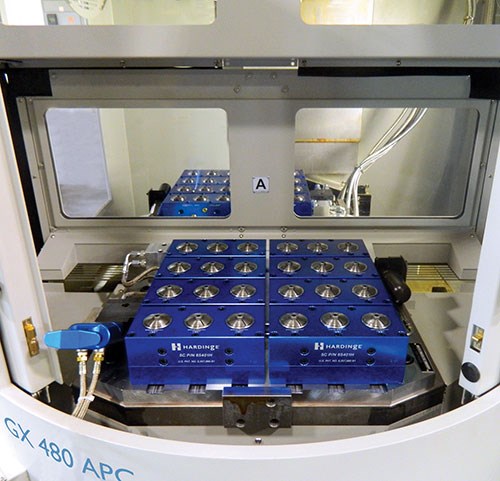Hydraulic or Pneumatic Actuation for Collet Blocks?
Collet-style workholding devices like collet blocks offer a number of benefits, but which actuating method is most appropriate for you?
Share







Grouping collet blocks together enables machine tools to machine multiple parts unattended. Collet blocks can be configured in a number of ways, including on tombstones and trunnion tables.
Collet-style workholding devices, such as collet blocks, offer a number of benefits. Collets automatically center parts to their center points known locations, they provide equal gripping pressure around a part’s circumference and expanding collet systems enable effective internal gripping of thin-wall parts. Grouping collet blocks together enables machine tools to machine multiple workpieces unattended over long stretches of time. However, should you go with pneumatics or hydraulics to actuate them? This article based on input from offers advice.
Related Content
-
Rail Manufacturer Moves Full Steam Ahead with Safe, Efficient Workholding Solution
All World Machinery Supply paired a hydraulic power unit with remote operating capabilities in a custom workholding system for Ahaus Tool & Engineering.
-
Workholding Fixtures Save Over 4,500 Hours of Labor Annually
All World Machinery Supply designs each fixture to minimize the number of operations, resulting in reduced handling and idle spindle time.
-
Chuck Jaws Achieve 77% Weight Reduction Through 3D Printing
Alpha Precision Group (APG) has developed an innovative workholding design for faster spindle speeds through sinter-based additive manufacturing.












